Abstract
The ichthyotoxin from Prymnesium parvum caused a slow contraction of the guinea-pig isolated ileum preparation, followed by decreased sensitivity to acetylcholine and to 5-hydroxytryptamine. These effects were reversed by washing. Administration of toxin was followed by insensitivity to further toxin. It was possible that a cholinergic transmitter participated in the contractions of the gut as this action was reduced both by atropine and by morphine. Illumination with visible light or warming a solution of toxin destroyed its antiacetylcholine activity before abolishing its stimulant action on gut. The crude extract of Prymnesium parvum may contain a mixture of active substances with different pharmacological actions.
Full text
PDF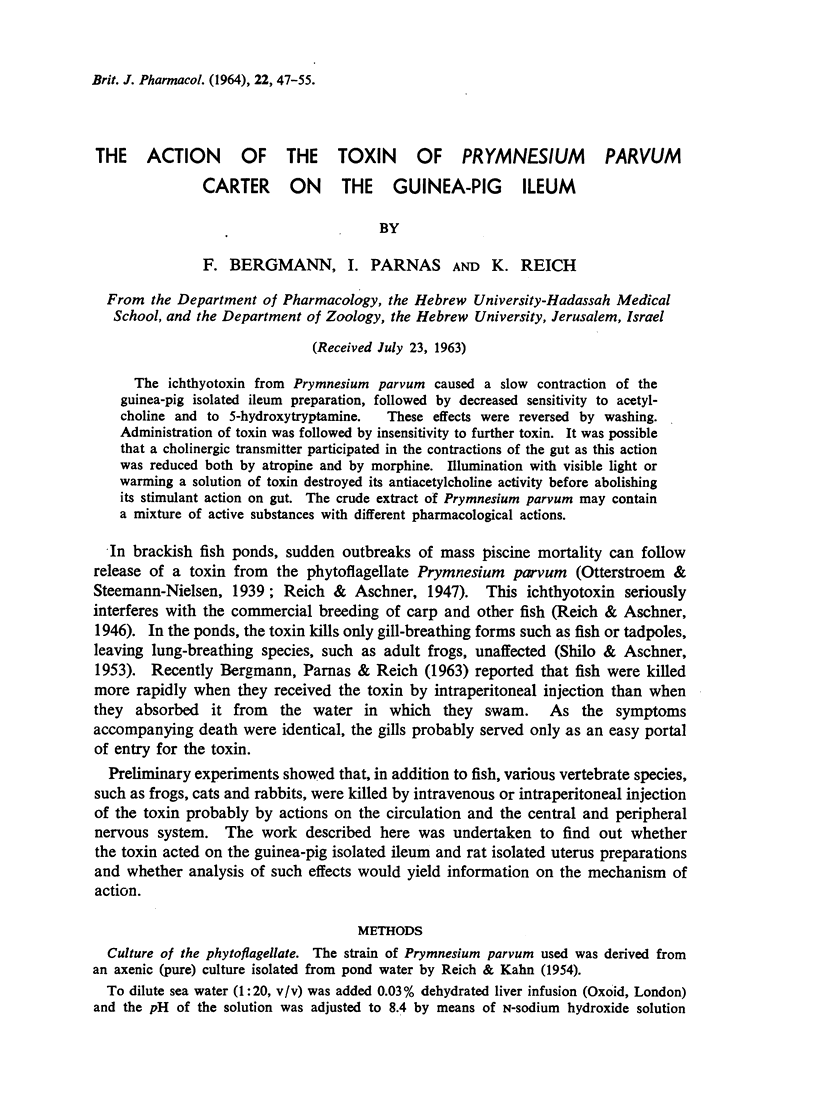
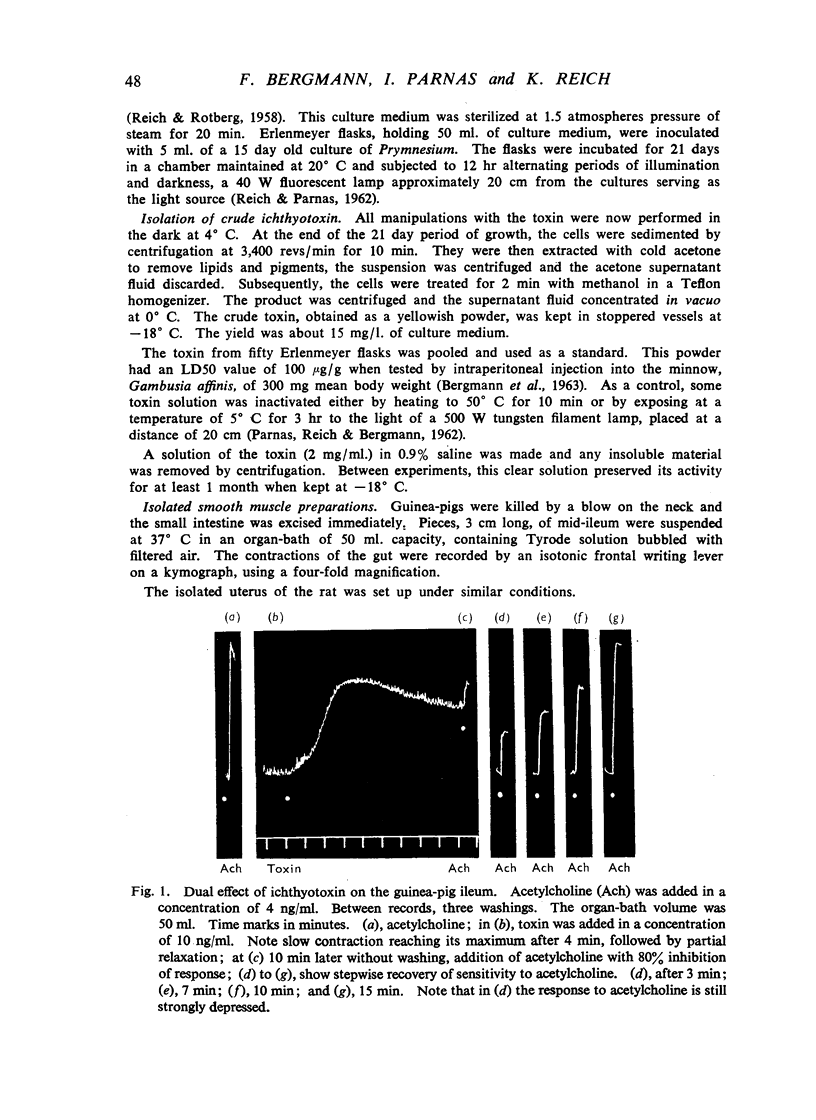
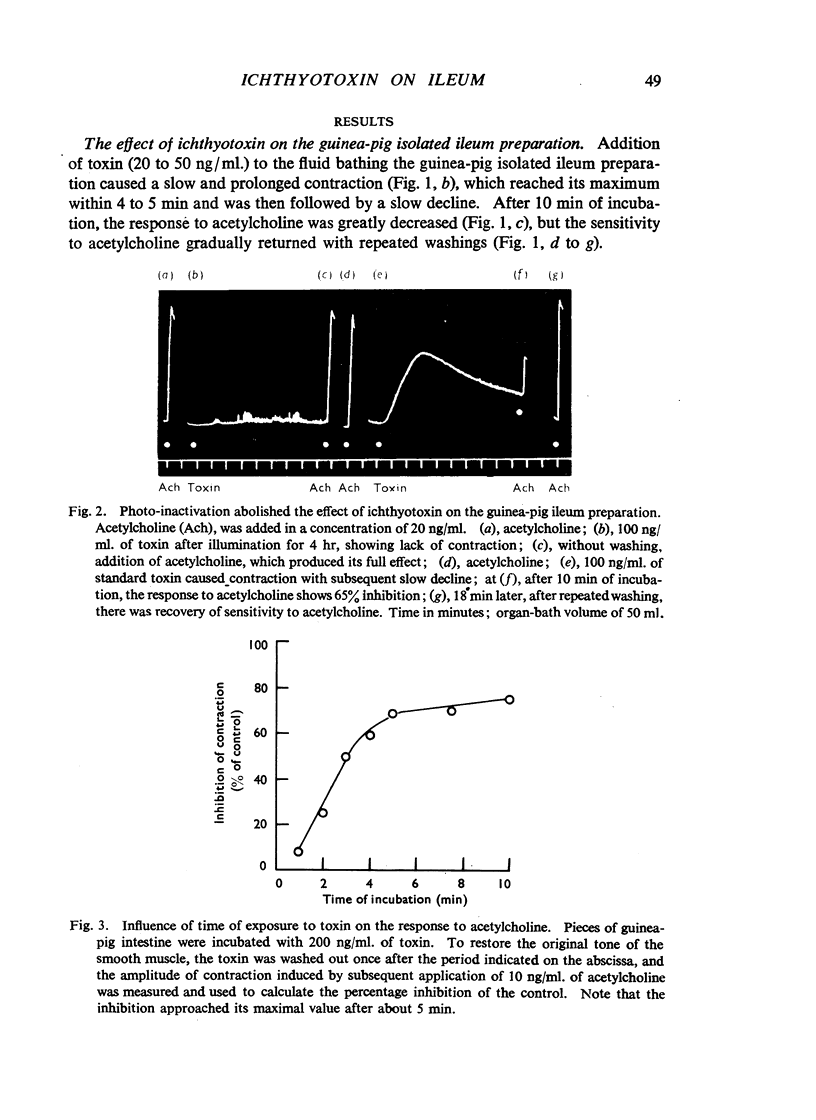
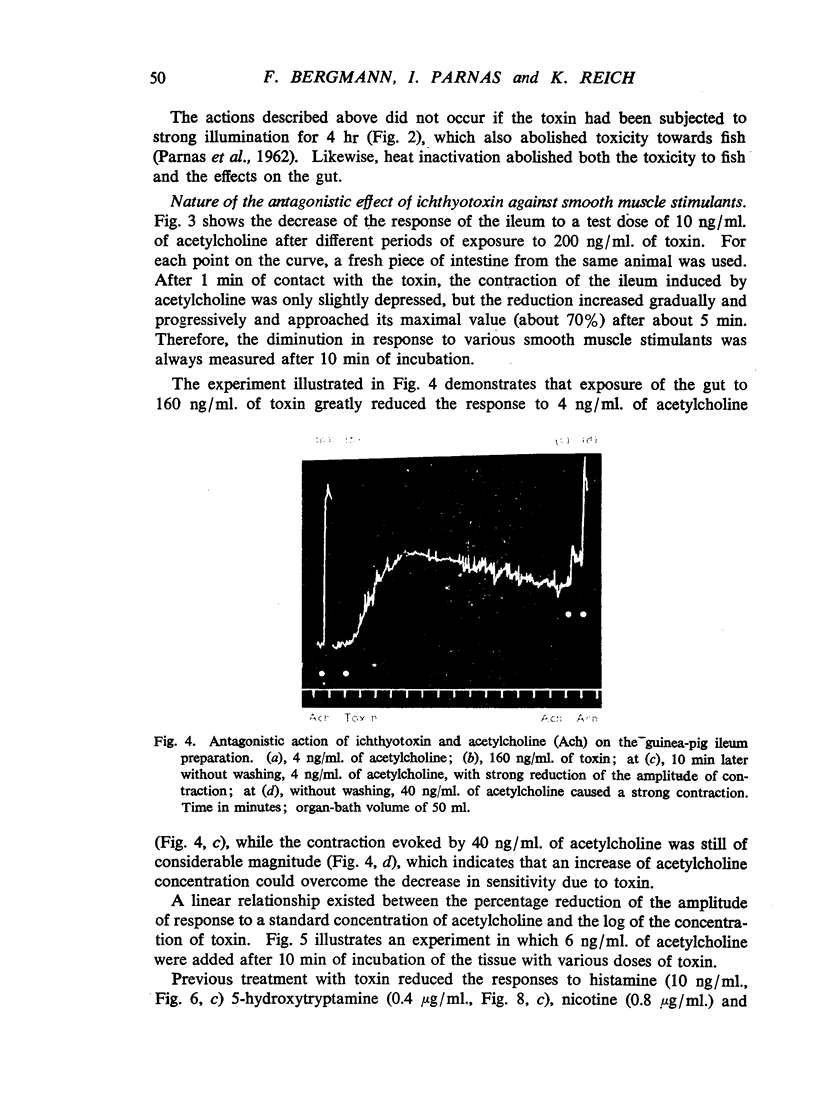
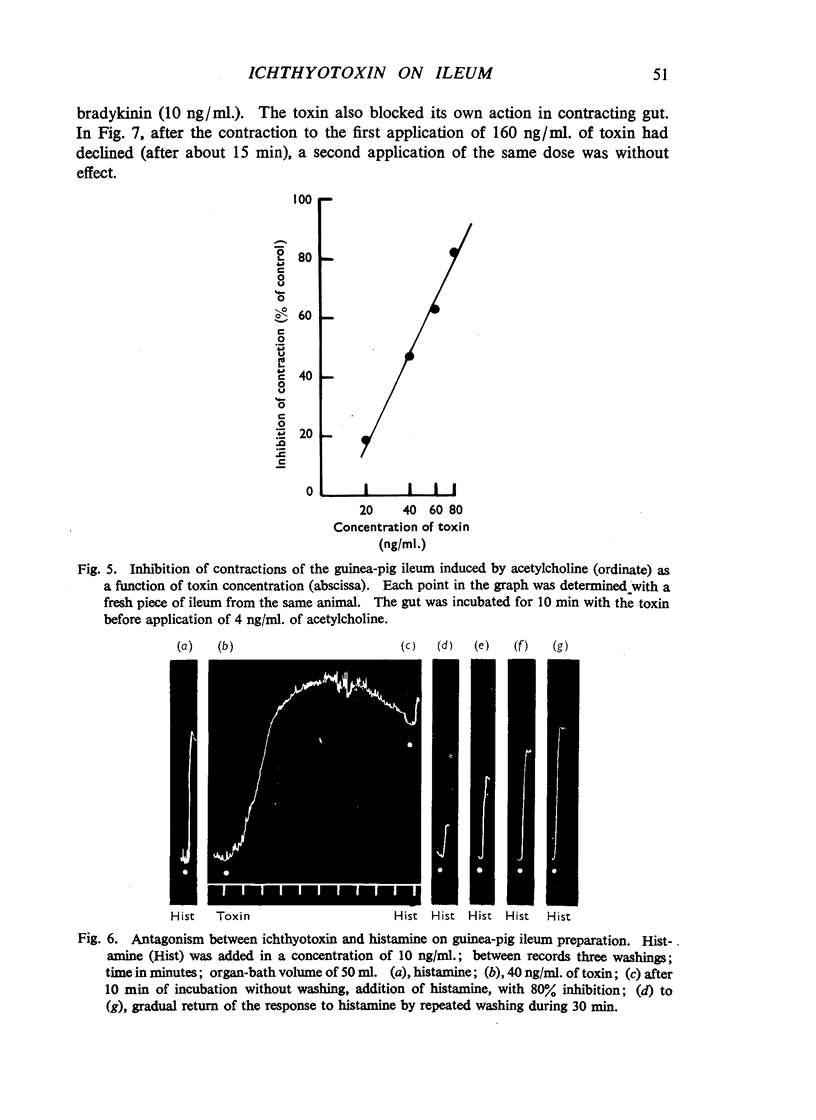
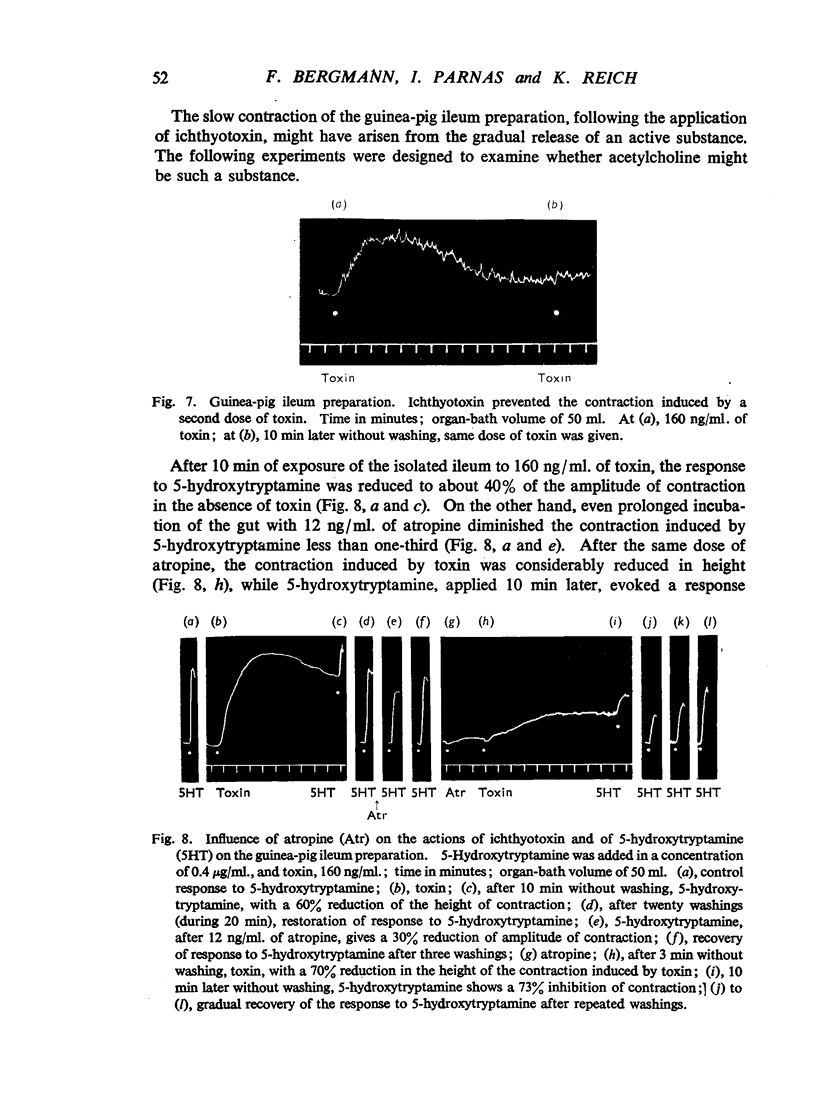
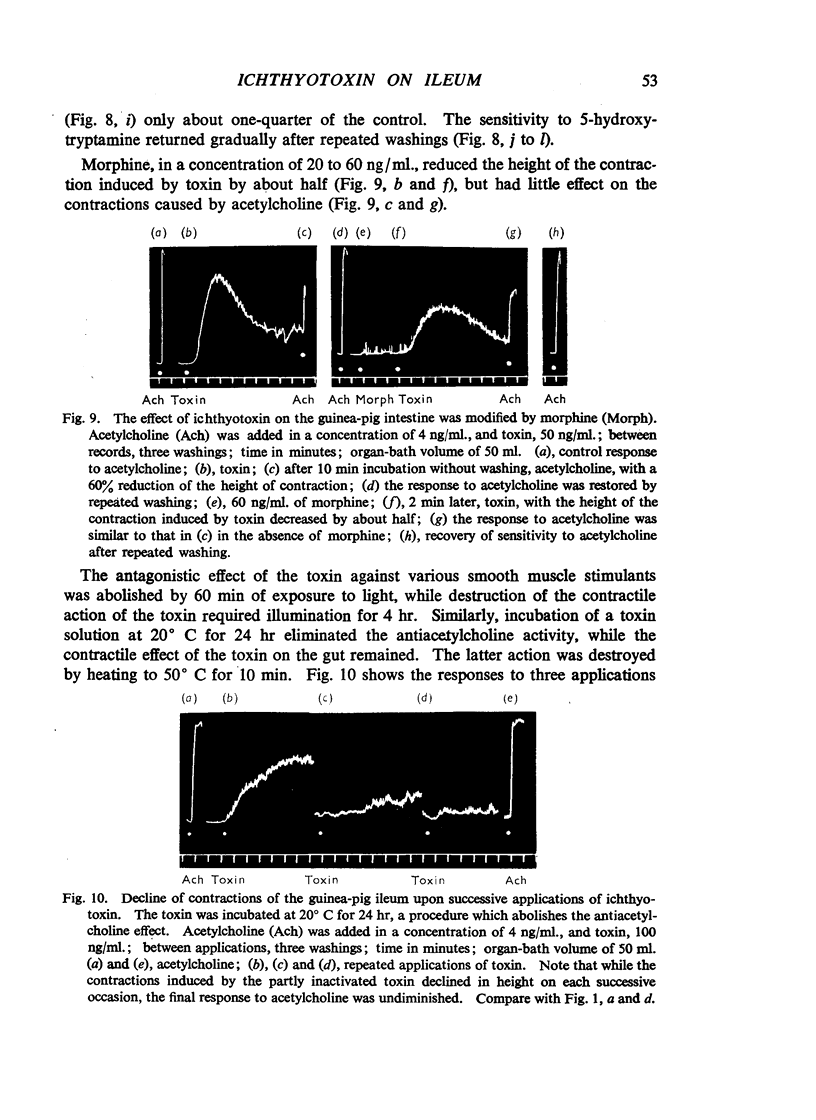
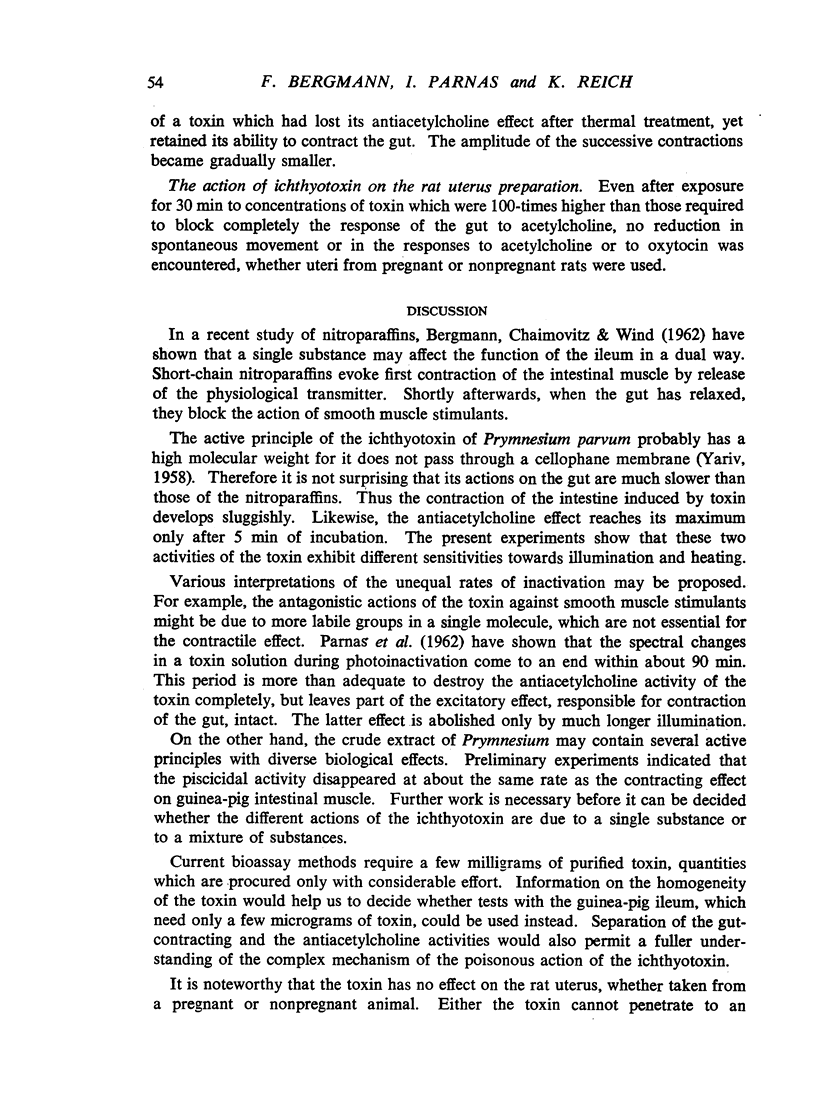
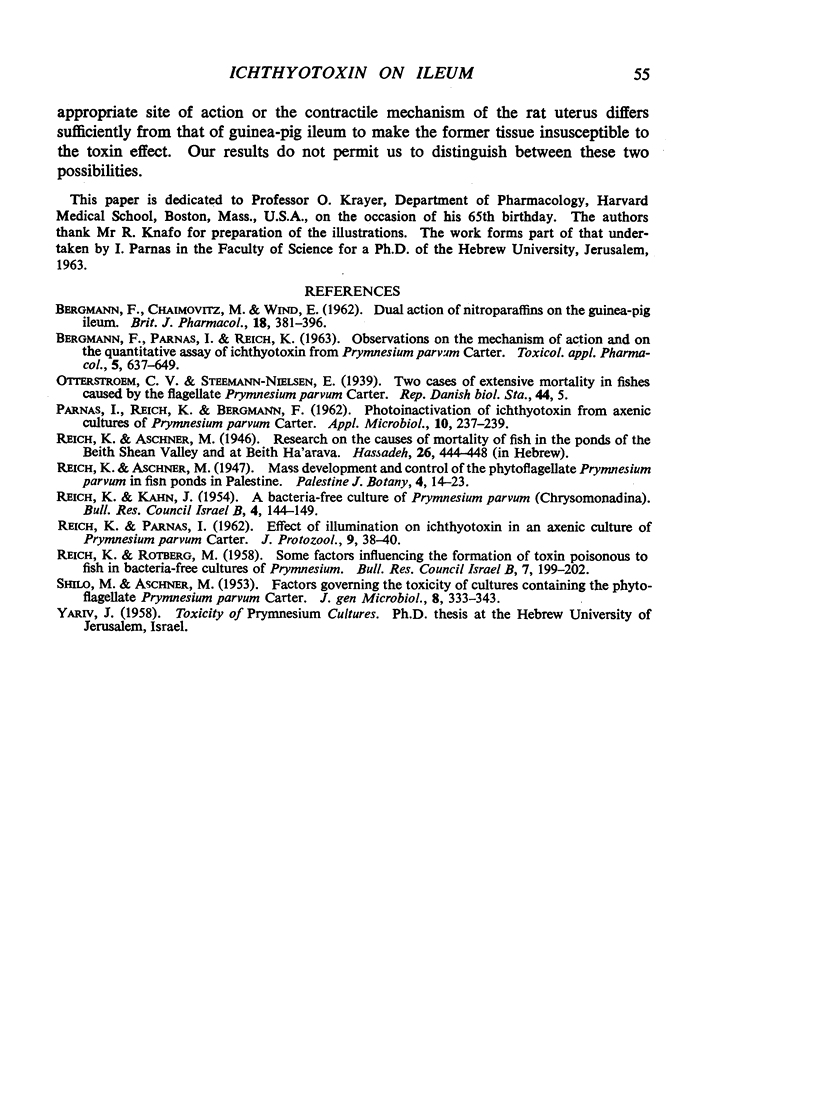
Selected References
These references are in PubMed. This may not be the complete list of references from this article.
- BERGMANN F., CHAIMOVITZ M., WIND E. Dual action of nitroparaffins on the guinea-pig ileum. Br J Pharmacol Chemother. 1962 Apr;18:381–396. doi: 10.1111/j.1476-5381.1962.tb01418.x. [DOI] [PMC free article] [PubMed] [Google Scholar]
- BERGMANN F., PARNAS I., REICH K. OBSERVATIONS ON THE MECHANISM OF ACTION AND ON THE QUANTITATIVE ASSAY OF ICHTHYOTOXIN FROM PRYMNESIUM PARVUM CARTER. Toxicol Appl Pharmacol. 1963 Sep;5:637–649. doi: 10.1016/0041-008x(63)90008-5. [DOI] [PubMed] [Google Scholar]
- PARNAS I., REICH K., BERGMANN F. Photoinactivation of ichthyotoxin from axenic cultures of Prymnesium parvum Carter. Appl Microbiol. 1962 May;10:237–239. doi: 10.1128/am.10.3.237-239.1962. [DOI] [PMC free article] [PubMed] [Google Scholar]
- SHILO M., ASCHNER M. Factors governing the toxicity of cultures containing the phytoflagellate Prymnesium parvum Carter. J Gen Microbiol. 1953 Jun;8(3):333–343. doi: 10.1099/00221287-8-3-333. [DOI] [PubMed] [Google Scholar]


